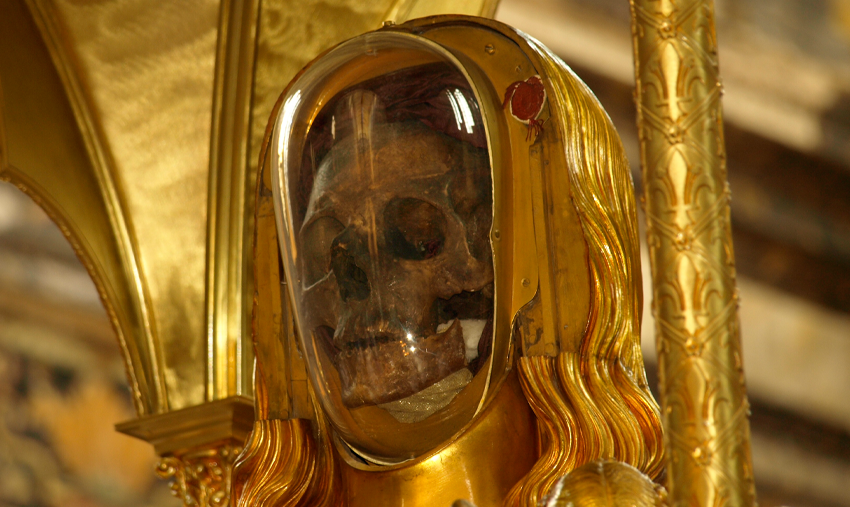Mentioned in all four gospels, what saint was born in the town of Magdala?
Don't scroll until you've answered.

Duh! is a weekly column that gives circuitous answers to obvious questions. If you dig it, you can find 100 more of these essays in the Geeks Who Drink book, Duh!.
Best known these days for being ‘shipped with Jesus by everyone from Martin Scorsese1 to Dan Brown, Mary Magdalene has taken a bit of a rollercoaster ride since her death nearly two millennia ago. For the record:
- Magdalene wasn’t the “sinful woman” who washed and kissed Jesus’s feet. That woman was unnamed.2 In a separate incident, a (maybe) different Mary did the same thing, but wasn’t identified as particularly sinful.
- Nor was she the adulterer who was saved from a lynch mob by Jesus’s “cast the first stone” mic-drop. That woman was also unnamed.2
- She was the only person that all four gospels place at both the crucifixion and resurrection sites, and the one from whom Simon “First Pope” Peter heard the news.
Apart from that, she was just a garden-variety woman of independent means, who started traveling with Jesus after he exorcised seven demons out of her–honestly, who hasn’t been there? This means Dan Brown got one thing more-or-less right: Early medieval church leaders,3 presumably squeamish about calling a woman the “apostle to the apostles,” developed all those scurrilous rumors about her–you know, back in the days when laypeople weren’t allowed to read the Bible for themselves.
Her hometown of Magdala developed no such reputation, mostly because it was buried until 50 years ago. Near the Jewish cultural capital Tiberias, Magdala was a prosperous fishing town whose ruins, excavated in multiple stages since 1971, are very interesting to archaeologists. Its synagogue was apparently unique in having a mosaic floor, and also yielded one of the earliest extant depictions of a menorah; its also-unique ritual baths prove that the people of the time didn’t always just cleanse themselves in the nearby Sea of Galilee.
Still and all, there are those who believe Mary wasn’t from Magdala at all. The “maybes” above point to a plausible alternate theory that Magdalene and Lazarus’s sister, Mary of Bethany, were one and the same. In that case, eagle-eyed readers will note that she would be from Bethany, which is much farther south near Jerusalem. And in that case, “Mary Magdalene” would mean “Mary the Tower,” an honorific underscoring her significance to early Christianity in much the same way as “Peter the Rock.”
Early medieval church leaders could not be reached for comment.
- Actually Nikos Kazantzakis, who wrote the 1955 novel The Last Temptation of Christ. An Orthodox Christian, his altogether devotional point in showing Jesus’s (imaginary) later life with Magdalene was to demonstrate what he gave up by not just yeeting himself off the cross. But that aspect was missed by a fair number of Christians, who protested the hell out of both the book and (also Christian) Scorsese’s 1988 film.
- Like a lot of biblical women. In fact they so outnumber the named women that the exhaustive reference book Women in Scripture devotes just 172 of its 556 main-body pages to women with names–despite the obvious fact that the named women have longer entries. This is your periodic reminder that every word of the Bible was written by a dude.
- Mostly Pope Gregory I “The Great,” sixth-century namesake of Gregorian chant (but not the much later Gregorian calendar), and also the guy who appointed the first Archbishop of Canterbury.
